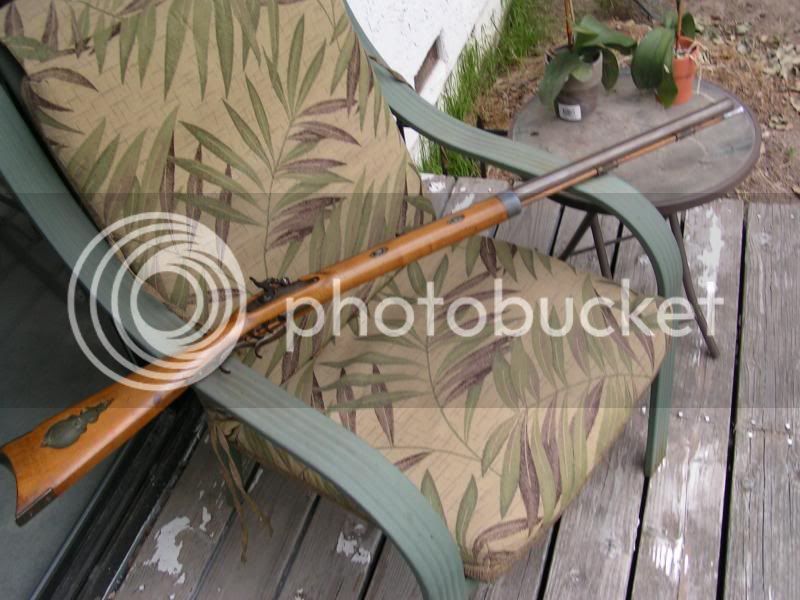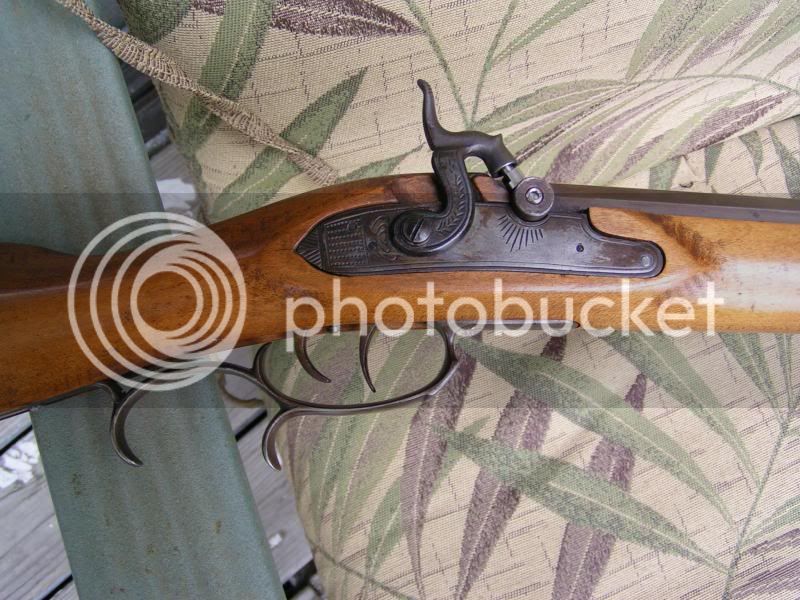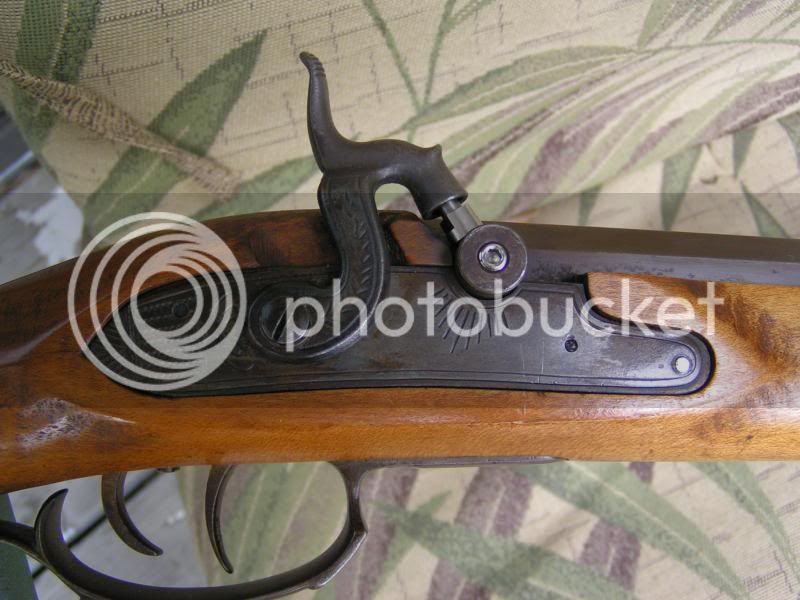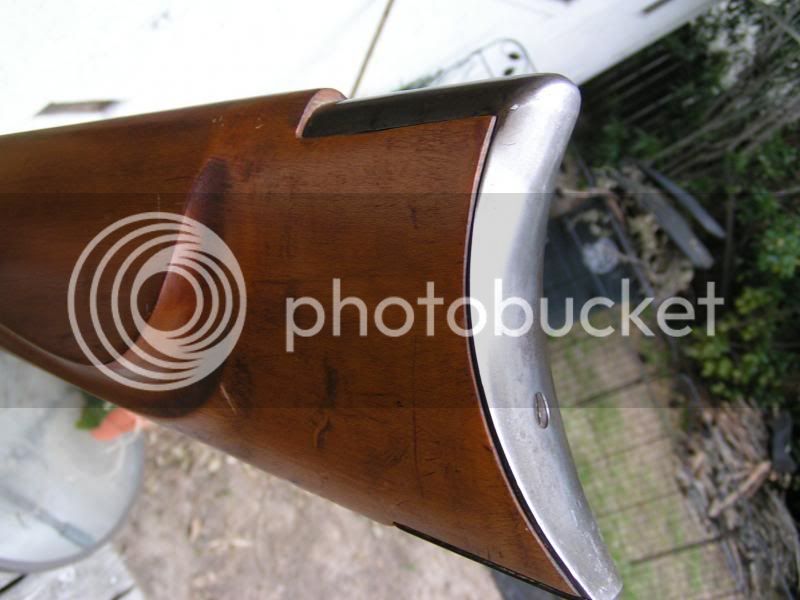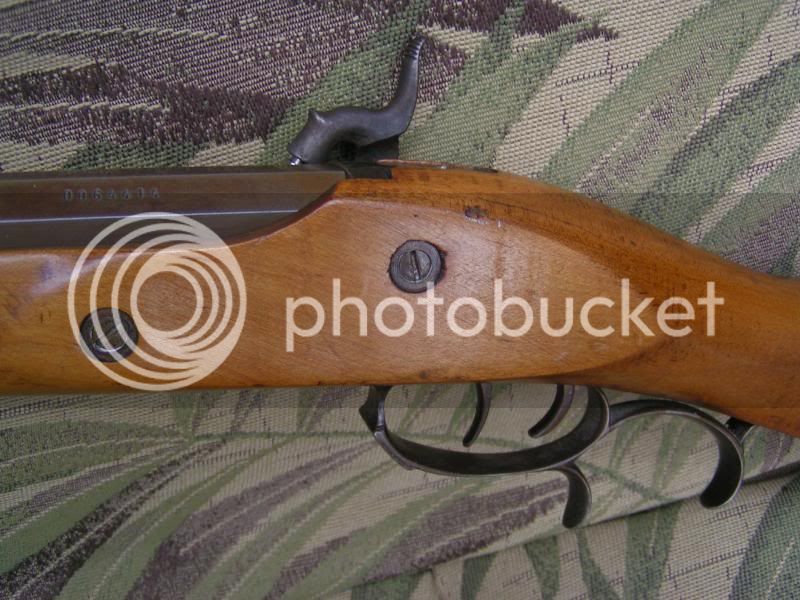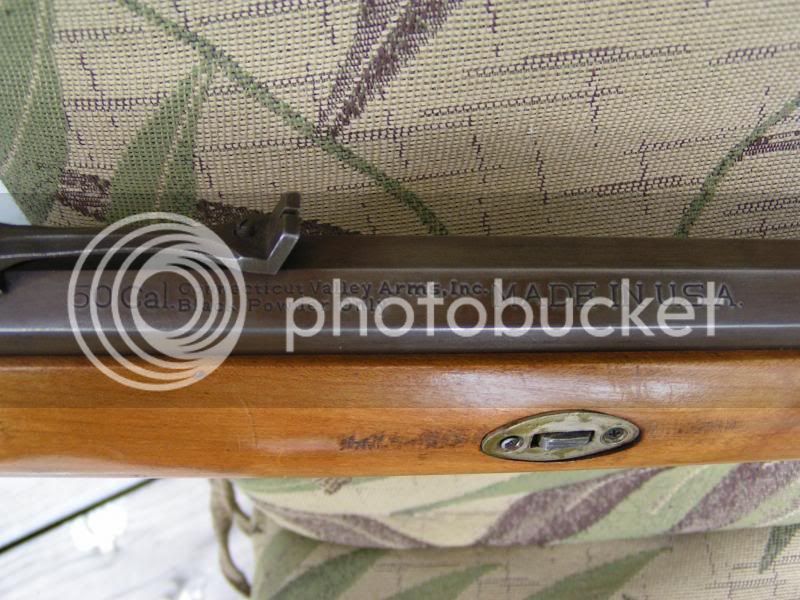Hello all, I am new to the hobby and new to the site. I just picked up a CVA .50 cal Hawken with a 32" barrel. I say Hawken because that is what the seller called it. On the barrel is written " 50 cal Continental Valley Arms Inc. Black powder only Made in USA. I will post some pics soon. My question is on the cylinder that the nipple screws into is a screw on the end. Is this a clean out screw or does it serve some other purpose. Because I do not know the nomenclature for the part it is hard to do a forum search. Any information on CVA and the gun would be much appreciated. Df.
-
Friends, our 2nd Amendment rights are always under attack and the NRA has been a constant for decades in helping fight that fight.
We have partnered with the NRA to offer you a discount on membership and Muzzleloading Forum gets a small percentage too of each membership, so you are supporting both the NRA and us.
Use this link to sign up please; https://membership.nra.org/recruiters/join/XR045103
You are using an out of date browser. It may not display this or other websites correctly.
You should upgrade or use an alternative browser.
You should upgrade or use an alternative browser.
New guy question
- Thread starter Dandyfunk
- Start date

Help Support Muzzleloading Forum:
This site may earn a commission from merchant affiliate
links, including eBay, Amazon, and others.
The screw is called by some a clean out screw. It can be used as such but you can also clean by removing the nipple.
By saying it says "Made in USA" I believe you have a CVA Mountain rifle which if that is the case, you made an exceptional find. It looks similar to the CVA Hawken but has pewter or silver colored hardware and the end cap on the end of the stock is flat on the end rather than rounded. I'm not 100% positive but I don't believe they put those barrels on their Hawken rifles.
By saying it says "Made in USA" I believe you have a CVA Mountain rifle which if that is the case, you made an exceptional find. It looks similar to the CVA Hawken but has pewter or silver colored hardware and the end cap on the end of the stock is flat on the end rather than rounded. I'm not 100% positive but I don't believe they put those barrels on their Hawken rifles.
longcruise
70 Cal.
It is a clean-out scew. Not all rifles have them though. Since it is there, you should remove it to clean and reinstall with a touch of grease on it to avoid rust problems. It is a Connecticut valley arms rifle. Dates to when they were built in the USA. Not sure of any dates on that. They built good serviceable rifles.
so, welcome to the hobby and enjoy the forum.
so, welcome to the hobby and enjoy the forum.
It's a CVA Mountain Rifle.
Good grab, they are about the best CVA made in the traditional line.
Good grab, they are about the best CVA made in the traditional line.
So is mine. Good catch! Like necchi said, the best rifle CVA ever put out.
Dandyfunk said:The hardware is pewter however the butt of the stock is concave to fit your shoulder.Df
Many refer to that screw as a 'clean out'. But, it really is there from part of the manufacturing process after drilling. No need, under normal circumstances, to ever remove it. Cleaning can be done with it left in. The more you mess with something the more chance there is of messing it up.
Enjoy your new rifle. It is one of the better factory made ml rifles ever.
Enjoy your new rifle. It is one of the better factory made ml rifles ever.
They were made in the 70s and 80's. Not sure about 90's. The term Mountain Rifle was just the model CVA decided to name it.
The term mountain rifle is more a less a romantic tern for the style that is often called a plains rifle. The style was a relatively short barreled (30" to 36") half stock rifle that was used during the fur trapping era when the beaver was nearly hunted to extinction in the mountains and then used in the hunting of buffalo for hides.
The style was epitomized by the architecture of rifles built by the Hawken brothers in St. Louis. Many other builders built similar sturdy rifles for use by the fur trade companies. In any event the modern "mountain" or "plains" or "hawken" rifles have been produced in quantity many times over the quantity of rifles produced from the 1820's to the end of the fur trade. I used "hawken" as a generic term for the many modern replicas.
The CVA Mountain rifle is a good rifle. Probably one of the best that CVA produced in percussion. The flint versions have some sparking issues.
The screw in the percussion drum is a plug for the ease of manufacture of the drum. It sounds better to call it a clean out screw, but it is better to leave it alone since adequate cleaning can be done by simply removing the nipple.
Enjoy your rifle.
The style was epitomized by the architecture of rifles built by the Hawken brothers in St. Louis. Many other builders built similar sturdy rifles for use by the fur trade companies. In any event the modern "mountain" or "plains" or "hawken" rifles have been produced in quantity many times over the quantity of rifles produced from the 1820's to the end of the fur trade. I used "hawken" as a generic term for the many modern replicas.
The CVA Mountain rifle is a good rifle. Probably one of the best that CVA produced in percussion. The flint versions have some sparking issues.
The screw in the percussion drum is a plug for the ease of manufacture of the drum. It sounds better to call it a clean out screw, but it is better to leave it alone since adequate cleaning can be done by simply removing the nipple.
Enjoy your rifle.
That's a Mountain rifle alright. Looks like it was used allot but also took good care of it.
That looks like it was made from a kit. The wood should not (would not) be that proud of the metal at the butt plate. The area around the lock has also not been shaped properly and file marks have not been sanded out. That won't affect the function of the gun and those things can easily be remedied with a rasp and sandpaper and a few hours of work followed by your finish of choice. The original Hawken rifles were usually made with quite plain maple and then varnished with dark varnish if you want it to more closely resemble guns of the fur trader period. The USA made barrels are reputed to be quite good, BTW, so congrats on your find.
On the "cleanout screw" I'd be inclined to leave it a slotted screw, and as has been said, leave it in there. It is, however, your rifle, so do what makes you happy! :wink:
On the "cleanout screw" I'd be inclined to leave it a slotted screw, and as has been said, leave it in there. It is, however, your rifle, so do what makes you happy! :wink:
Well, for what it is you really do NOT get any better other than custom, and even then maybe not necessarily... Congratulations, and welcome!
Here's a pic of my .50 CVA Mountain Rifle (made in Spain I believe).

And feel free to call it a Hawken -- it's every bit one. In fact the CVA Mountain Rifle is more similar to the stereotypical Hawken (of course there was no such thing as "the" Hawken rifle -- they were all custom -- no two alike) than many others that wear that moniker. Say it proudly -- I have a HAWKEN!
PS: LOTTA room to refinish that wood!!!
Here's a pic of my .50 CVA Mountain Rifle (made in Spain I believe).

And feel free to call it a Hawken -- it's every bit one. In fact the CVA Mountain Rifle is more similar to the stereotypical Hawken (of course there was no such thing as "the" Hawken rifle -- they were all custom -- no two alike) than many others that wear that moniker. Say it proudly -- I have a HAWKEN!
PS: LOTTA room to refinish that wood!!!
I agree. This was a kit gun which explains why the comb of the stock is so high above the tang on the butt plate.
The 1980 Dixie Gunworks catalog shows the CVA Mountain Rifle Kit for sale in both .45 and .50 caliber.
At the time, it sold for $125 and was made with a Maple stock.
The 1980 Dixie Gunworks catalog shows the CVA Mountain Rifle Kit for sale in both .45 and .50 caliber.
At the time, it sold for $125 and was made with a Maple stock.
mtmshieldshotmail.com
40 Cal.
- Joined
- Nov 2, 2008
- Messages
- 132
- Reaction score
- 1
The orig. builder of that kit rifle made little effort to assemble it properly. There's a forest's worth of wood that needs to come off, if you're inclined to finish it properly.
Regards,
Mike
Regards,
Mike
Similar threads
- Replies
- 26
- Views
- 1K
- Replies
- 2
- Views
- 324



